In several of my previous projects you could see various unusual clocks , including several in the retro Analog style. This time I will present you another clock from this group, but now on a E-paper Display. Specifically, in this project I used the CrowPanel ESP32 4.2” E-paper Display module with built-in ESP32S3 MCU.
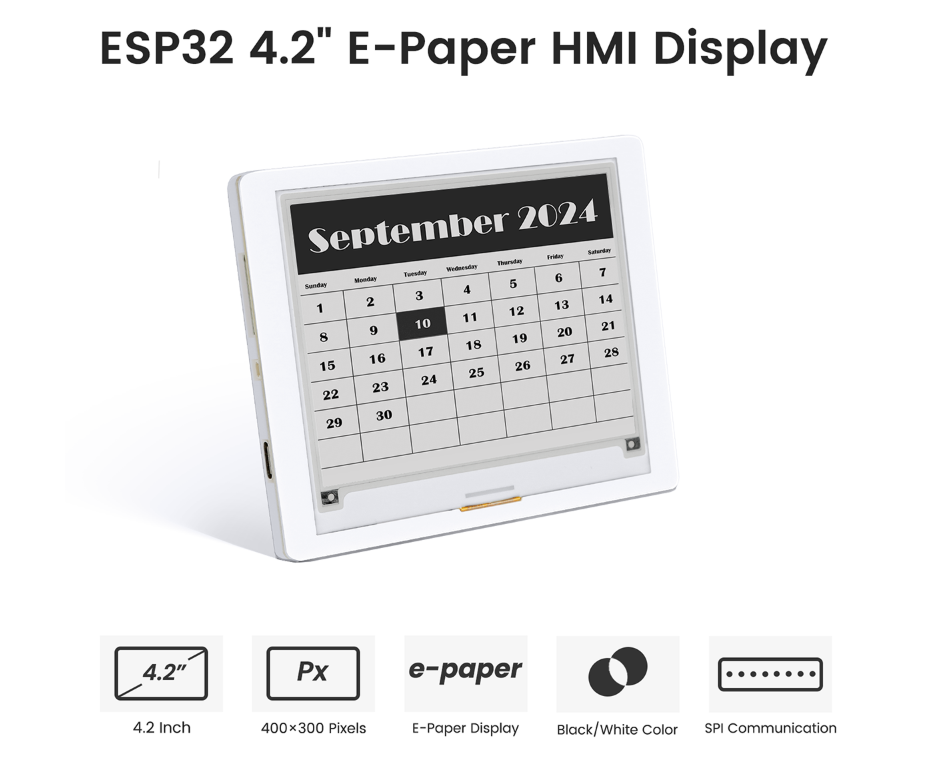
I have this display from a previous project of mine and I can tell you that it is very practical in the sense that there is no need to connect components and solder, and it has multiple IO ports, a microSD slot, multiple buttons, and even a battery charger circuit. I got the idea for this project from the makerguides website, so I made several changes and additions to the basic code.
The changes consist of:
- adjusting the code specifically for the above-mentioned display module,
- Changing the orientation from vertical to horizontal
- correcting residual "ghost" prints as a result of partial refresh
- Every 60 seconds (the elapsed minute) a full refresh of the screen, during which the colors are briefly inverted, which presents a nice visual and informative effect
- Unlike the original code, the hour hand now moves continuously and proportionally to the elapsed minutes
- and, The outer frame of the clock is thickened and its parameters can be changed in the code
Of course, I have added several new options that, in addition to the visual, also have a very useful informative character, and I will explain their functioning in the description of the clock's operation.
New Functions:
- Two progress bars for graphical display of elapsed time, each of them divided into four intervals,
- Digital information about the elapsed hours of the current day, as well as the minutes of the current hour,
- Change clock face with a button between Arabic and Roman numerals.
- and also with the press of a button, there is an option to invert colors.
As for the code, as you can see, it is designed in a way that allows you to easily change the basic graphic parameters, so you can easily create a custom-looking clock face according to your own ideas.
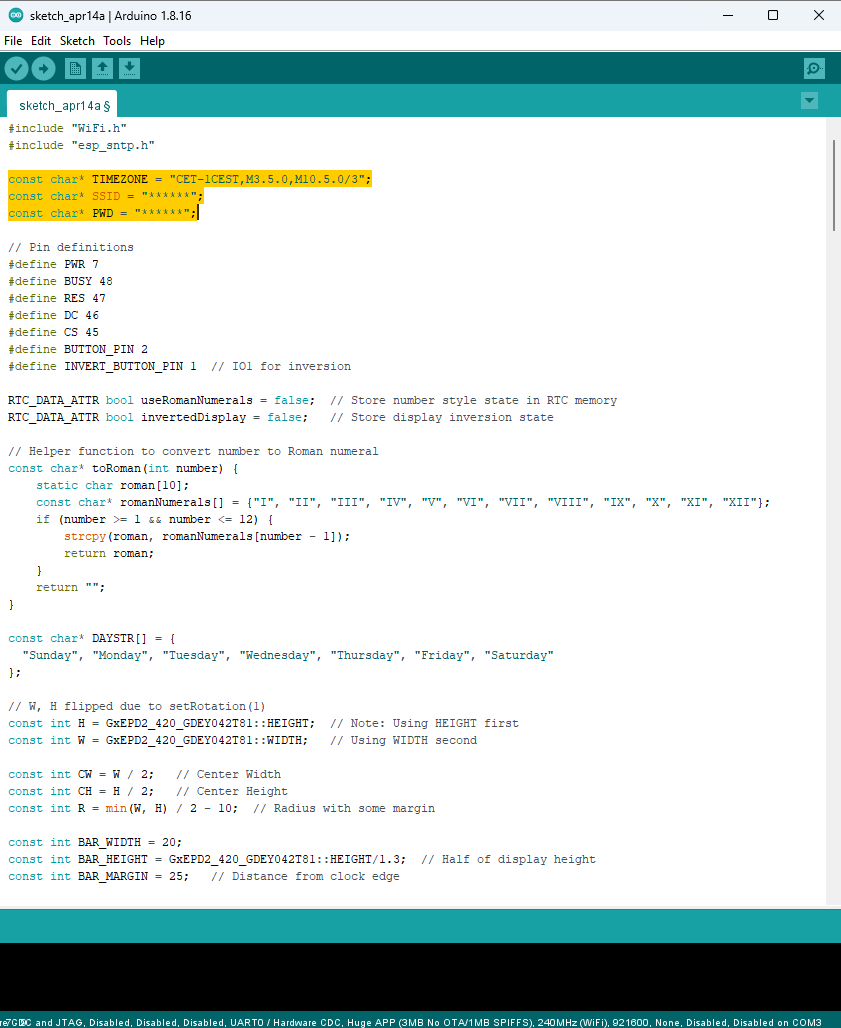
It is important to mention that the exact time is downloaded via the Internet according to the time zone in which you live. For other time zone definitions have a look at the Posix Timezones Database. You also need to enter the credentials from your local Wi-Fi network.
Now let's see how the device works in real conditions. After switching on, a certain amount of time should pass while the clock connects to Wi-Fi and downloads the correct time. Then the clock appears in an analog style drawn on a white background. It shows the correct time, the day of the week, as well as a full date in the format day/month/year.
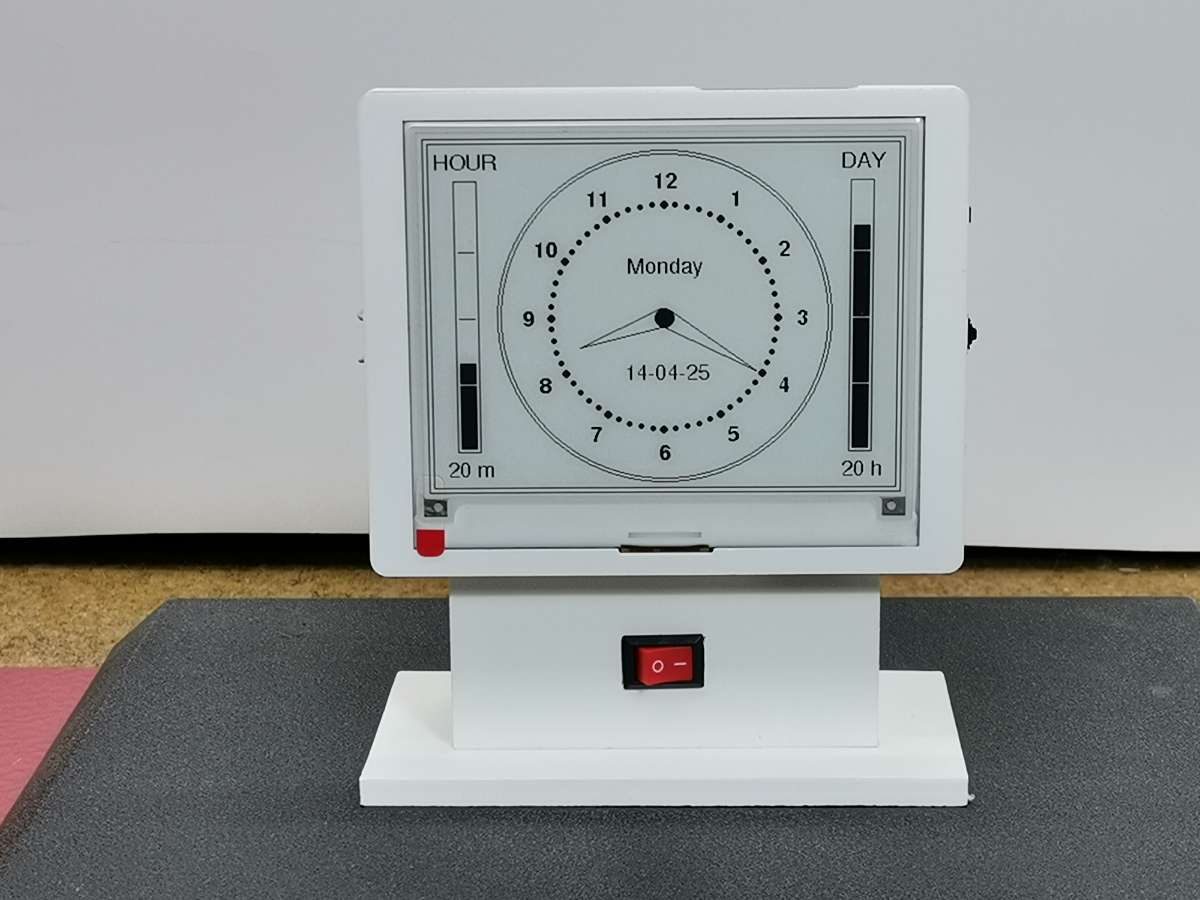
On both sides of the clock there are two progress bars. The right one shows the elapsed time of the current day in graphical form, and the lower part shows the numerical value of this information. Similarly, the left progress bar shows the elapsed time of the current hour, also in graphical and numerical form. For a better visual representation of the elapsed time, the two progress bars are divided into four parts, with one part on the right bar representing 6 hours, and on the left bar, 15 minutes.
As I mentioned earlier, the display module contains several buttons, so I used two of them for additional options. By pressing the upper button, the numbers that indicate the hours are transformed from Arabic to Roman.
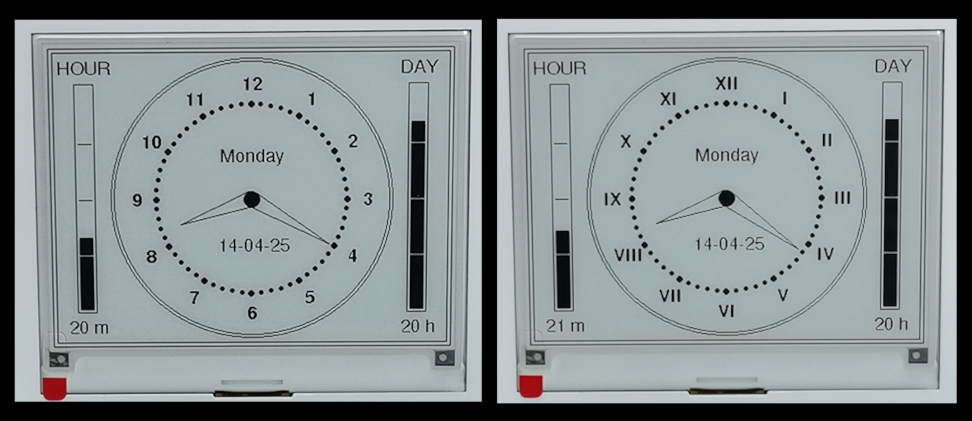
By pressing the button again, they return to their original state. Now, by pressing the lower button, the colors of the display are inverted so that the background is black and the hour is white.
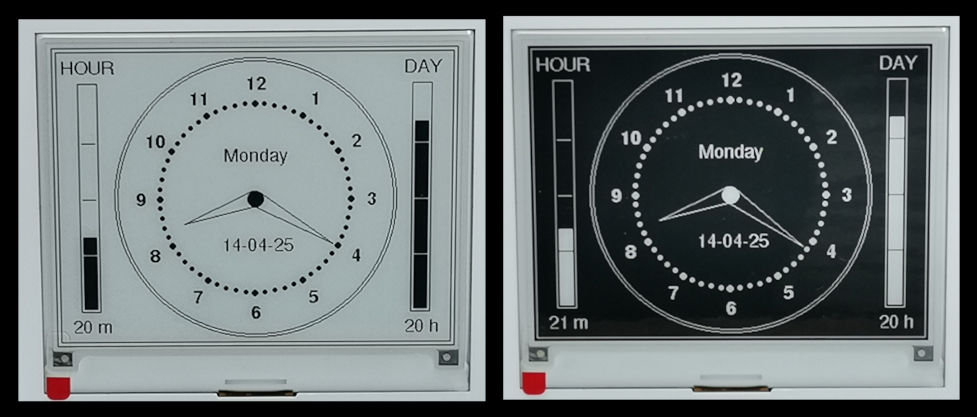
During the explanation, you could notice that the screen refreshes exactly at the moment when a new minute begins, which represents an additional visual and informative effect. Considering that the display refreshes very briefly, once a minute, the battery lasts a very long time.
And finally a short conclusion. This is a A low-power e-paper Analog style clock with smart features like Wi-Fi time sync, invertible display, Roman/Arabic numeral toggling, real-time progress bars, and minute-by-minute updates, built on an ESP32 Display module for plug-and-play simplicity.